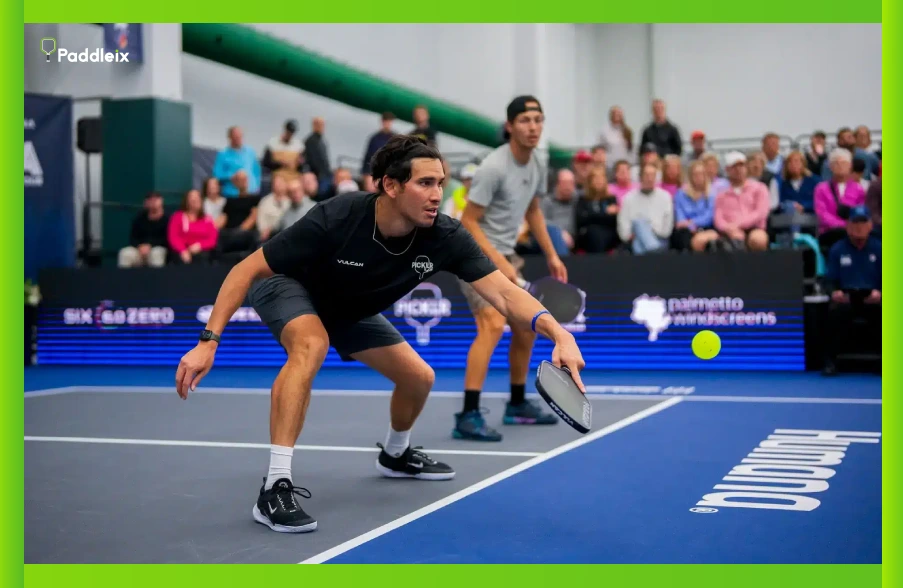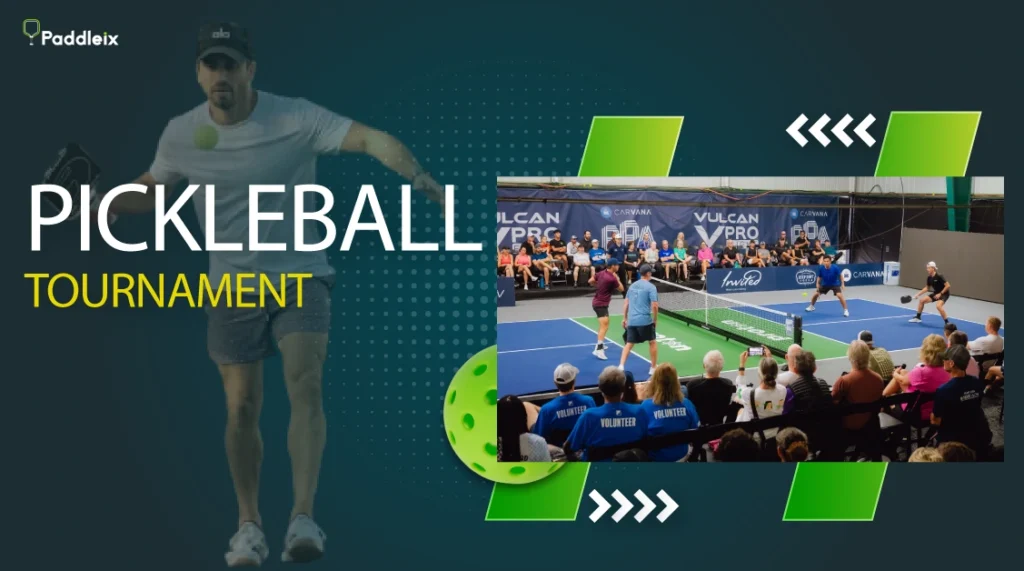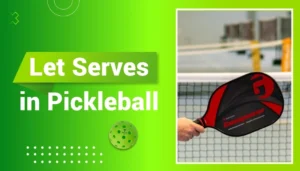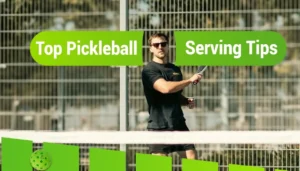A couple winters ago, I was in a chilly Michigan gym, escaping the snow and playing some of the most competitive pickleball I’d ever experienced. That day I realized—indoor pickleball isn’t just a weather backup… it’s a whole different game.
No wind, no sun, just fast-paced rallies and sharp, strategic play. And the best part? The community vibe indoors is just as strong—maybe even stronger.
In this guide, I’ll break down everything you need to know about indoor pickleball tournaments in the U.S.—from top events and smart gear choices to strategy tips and first-time advice.
Let’s get you ready to play, no matter the season.
Spotlight on the Top 3 Indoor Pickleball Tournaments in the U.S.

Pickleball doesn’t stop when the weather turns cold—and honestly, indoor tournaments might be where the real magic happens.
Let’s dive into three of the biggest and most exciting indoor events you’ve got to check out. Whether you’re chasing medals or just craving a great playing experience, these tourneys bring the heat (even if it’s freezing outside).
USA Pickleball Indoor National Championships
This is THE big one. The USA Pickleball Indoor Nationals is like the Super Bowl of indoor pickleball. Every year, it draws top players from all over the country—and it’s open to all skill levels, so whether you’re a 3.0 newbie or a 5.0 beast, you’re welcome.
The vibe? Electric. Courts lined up in a massive venue, players focused, spectators clapping, and the sound of paddles and squeaky shoes filling the air.
My First Time at Nationals…
I remember walking into my first Indoor Nationals feeling like I’d stepped into a pickleball dream. My heart was pounding, my palms were sweaty, and I forgot half my warm-up routine.
We lost our first match (ouch), but rallied hard through the consolation bracket. No medal, but I left with a full heart and a ton of new friends.
Coach’s Tip:
**Train with indoor balls—**seriously. They bounce lower, move slower, and feel different from outdoor balls. Get comfortable with them before you show up. Franklin X-26 or Onix Fuse Indoor are great options.
Midwest Indoor Pickleball Championships
If you’ve never played in the Midwest during winter, you’re missing out. This tournament is held during the colder months when outdoor courts are buried in snow—but indoors? The action is red-hot.
Players come from all over the region, and the competition is intense. But what makes this event special is the friendly, small-town community vibe.
Banana Bread & Third-Game Thrillers
One of my favorite tournament memories happened here. We were in a mixed doubles match that went to a third-game tie at 10–10. Total nail-biter.
After we finally squeaked out the win, our opponents—who we’d never met—came over with homemade banana bread. I’m not even kidding. That’s the Midwest for you.
Coach’s Tip:
Indoor courts in these venues are often hardwood or sport court, which can get slick. Bring shoes with good grip and layer up—these gyms aren’t always well-heated, especially in the early morning rounds.
Winter Classic Indoor Tournaments (Various Locations)
This isn’t just one event—it’s a series of local and regional tournaments hosted across the northern U.S. during winter. Think of them as the perfect off-season warm-up: more casual, less pressure, and always a great time.
You’ll usually get round-robin play, which means more guaranteed matches and a great chance to learn, improve, and meet fellow players.
Unexpected Partnerships
A few winters back, I signed up for a Winter Classic in Michigan just to shake off the holiday rust. Didn’t know anyone. But during warm-ups, I met another solo player—we paired up last-minute for men’s doubles and ended up clicking instantly. We didn’t take gold, but we walked away smiling like champions.
Coach’s Tip:
Bring snacks, water, and extra layers—these events are often hosted in multi-use gyms that can get chilly. And hey, even if it’s “just a small tournament,” treat it like a big one. The reps matter.
Which One Should You Play?
Here’s the breakdown at a glance:
| Tournament | Vibe | Skill Level | Best For |
|---|---|---|---|
| Indoor Nationals | Big, bold, intense | All levels | Chasing a national title or big-stage experience |
| Midwest Champs | Competitive but friendly | Intermediate to advanced | Great regional challenge with amazing community |
| Winter Classics | Chill, social, and fun | Beginner to intermediate | Staying sharp during winter, making connections |
Rules & Format of Indoor Pickleball Tournaments

What I’ve Learned—and What You Should Know
I’ll be honest—my first indoor pickleball tournament threw me off more than I expected. The court looked familiar, but the bounce? The lighting? The ball? Everything felt just a little… different.
Over time, though, I’ve figured out how to turn those indoor quirks into my competitive edge. Let me walk you through the formats, key rule differences, and what I do to prepare.
Tournament Formats (And How I Handle Each One)
There are usually three types of tournament formats I run into at indoor events. Each one plays a little differently, and I adjust my mindset depending on what I’m signed up for.
Single-Elimination
One loss and I’m done. No second chances. I know I need to come out focused and sharp from the first point—no easing into it. These are high-pressure, and honestly, I don’t love them unless I’m really confident in my current form.
Double-Elimination
This one gives me some breathing room. If I lose once, I drop into the “losers’ bracket” and still have a shot at climbing back. I like this format because it gives me time to adjust—especially if I’m still getting used to the court or the lighting.
Some of my best tournament runs have come from fighting through the back door.
Round-Robin
This one’s my favorite when I want to get lots of playing time. I usually get to play five or six matches regardless of outcome, which is great for shaking off nerves and learning as I go.
Even if I don’t win, I always walk away feeling sharper, especially now that I’ve got a solid grip on how scoring actually works across different formats.
What’s Different Indoors (And How I Adjust)

The Court & The Bounce
Indoor courts feel different underfoot. Whether it’s polished wood or synthetic flooring, I’ve noticed the ball doesn’t bounce as high or as fast. When I first started playing indoors, my third-shot drives just died. That’s when I learned to lean into the soft game—drops, resets, dinks.
Once I started playing lower and slower, things clicked. I wasn’t fighting the surface anymore—I was working with it.
The Ball
The indoor ball has fewer holes and a totally different feel. It’s lighter, softer, and reacts more to spin and touch. The first few times I played with one, my timing was off. I kept overhitting or misjudging the bounce.
Now, I always practice with indoor balls—like the Franklin X-26—a couple weeks before any tournament.
It makes a huge difference when I step on the court already used to how the ball moves and responds off my paddle.
Lighting & Space
Lighting is a wild card. I’ve played in bright, well-lit facilities and in dim gyms where shadows creep across the kitchen. Once, I played under lights that flickered just enough to mess with my depth perception—and no, I couldn’t blame my missed volleys on that alone!
I always take time during warm-up to check out the lighting and spacing. Some courts are tight, with barely any room behind the baseline. So I don’t rely on deep lobs as much indoors, and I keep my movement compact.
🎯 My Go-To Move: I bounce the ball a few times in different spots on the court during warm-ups. I want to know exactly how it’s reacting off the surface before the first serve.
How I Prepare for Indoor Play
Tournament prep has become a ritual for me. When I know I’ve got an indoor event coming up, here’s how I train:
🔧 My Indoor Training Focus:
-
Soft hands: I spend extra time on dinks and resets. Indoors, I rely on control way more than power.
-
Shadow footwork drills: I know it sounds simple, but I’ll run footwork drills in my garage or hallway—just me, no ball. It builds confidence and gets my body moving efficiently.
-
Situational play: I try to simulate indoor play as best I can—shorter bounce, faster pace, tighter reactions.
One winter, I was prepping for a tournament and didn’t have regular court time, so I marked out a mini kitchen line in my basement and practiced dinks for 20 minutes a day.
I ended up making the medal round. Not because I was the most athletic—but because I felt prepared.
Essential Gear for Indoor Play
First things first—your paddle. Not all paddles perform the same indoors. I’ve found that lighter paddles with a textured surface help create more spin, which is crucial for indoor play. The Selkirk Vanguard is a great paddle for this.
When it comes to shoes, indoor courts can be slippery, so make sure you have a pair with non-marking soles. I can’t stress this enough. You don’t want to be the one sliding all over the place.
Strategy Adjustments for Indoor Play
Indoor pickleball can feel like a completely different game. Without environmental factors like wind or sun, you have much more control over the ball. But that also means your opponents do too, so you’ll need to adapt your strategy.
Controlling the Pace
Indoors, the slower ball speed gives you the opportunity to control the tempo of the game. I like to focus on soft shots and dinks to keep the ball low and force my opponents to make mistakes. Because the ball doesn’t bounce as high indoors, it’s easier to hit shots that stay close to the ground, making it harder for your opponent to attack.
Mixing Up Shots
One strategy I love to use indoors is mixing up the spin. Since the indoor ball reacts more to spin, I like to alternate between heavy topspin and slice shots. This keeps my opponent guessing and forces them to adjust constantly.
A well-placed slice can really stay low on indoor courts, making it nearly impossible for your opponent to return aggressively.
Adjusting to Opponents
In indoor pickleball, consistency is key. I often find that players who rely on power struggle more indoors because the slower ball means their drives are easier to block. Instead, focus on consistency and placement.
Look for your opponent’s weaknesses—whether it’s their backhand or their footwork—and target those areas relentlessly.
Pro Tip: Keep your serves low and deep. The slower ball makes it easier for opponents to attack shallow serves, so aim for deep, low serves that bounce close to the baseline.
Navigating Tournament Logistics
Indoor tournaments can sometimes feel like a logistical puzzle. But don’t worry, I’ve got you covered.
How to Register for Indoor Tournaments
Most major indoor tournaments are listed on the USA Pickleball Association website. You’ll need to sign up well in advance because these tournaments fill up fast. I usually set reminders on my phone for registration dates.
Travel and Accommodations
If you’re traveling for a tournament, it’s best to book a hotel near the venue. Many players stay in the same place, which makes for a fun, social atmosphere. Don’t forget to plan your meals too. Playing multiple games in a day takes a lot of energy, and you’ll need to stay fueled.
What to Expect on Tournament Day
On tournament day, it’s all about routine. I always arrive early to warm up, especially in an indoor environment. Check out the facilities, get comfortable with the lighting, and hit a few practice shots before the matches begin.
Most tournaments have a players’ lounge or snack bar, which is great for refueling between games.
Tips for First-Time Indoor Tournament Players
If it’s your first indoor tournament, here are a few things I wish I had known.
Warm-Up Routine
Warming up indoors is a little different because the temperature is controlled. You won’t need to sweat it out in the heat, but you still need to get your body moving. I like to focus on stretching and doing light cardio before hitting the courts. This way, I’m loose and ready for action.
Building Experience
My advice? Start small. Before jumping into a national event, try a few local or regional tournaments. These smaller competitions are perfect for getting a feel for the pace and flow of indoor play. Plus, they’re a great way to build confidence.
Resources and Tools for Indoor Pickleball Players
Apps and Websites
The USAPA Tournament Calendar is your best friend when it comes to finding indoor tournaments. I also recommend apps like Pickleball Central and Playtime Scheduler to connect with other players and find practice games in your area.
Training Programs
There are tons of online resources for indoor pickleball training. You can check out Pickleball Academy for tailored drills and strategy lessons that focus on indoor play. Trust me, these can make a huge difference in your performance.
Conclusion
So, there you have it—everything you need to know about playing in USA indoor pickleball tournaments. Whether you’re a seasoned player or just starting out, indoor tournaments offer an exciting and unique challenge.
The key is to prepare, practice, and enjoy the experience. After all, pickleball is all about having fun while improving your game.
Now, what are you waiting for? Get out there, sign up for your next indoor tournament, and enjoy the thrill of indoor pickleball. Who knows, maybe I’ll see you on the court!
Indoor Pickleball FAQs
Is indoor pickleball really that different from outdoor?
Yes—and it surprised me at first. The ball bounces lower, the pace is quicker, and there’s no wind or sun to worry about. It took a few matches to adjust, but once I did, I loved the control and consistency indoors.
Do I need special shoes for indoor play?
Definitely. I learned the hard way that regular running shoes can slip on hardwood courts. Look for indoor court shoes with non-marking soles and good grip. Your ankles will thank you.
What kind of ball should I use for indoor tournaments?
I use the Franklin X-26 or Onix Fuse Indoor. They’re lighter and have fewer holes than outdoor balls, so they don’t bounce as high or move as fast. Get used to the feel before game day.
How can I prepare for my first indoor tournament?
Keep it simple:
-
Practice with indoor balls
-
Focus on soft game drills (dinks, resets)
-
Get comfortable moving on hard indoor surfaces
And most of all—have fun and learn. My first indoor tournament taught me way more than I expected.
What’s your favorite indoor tournament moment?
Honestly? It was losing in the first round of a big event… then fighting my way back through the consolation bracket and ending the day with a bronze medal. That comeback felt better than gold.


